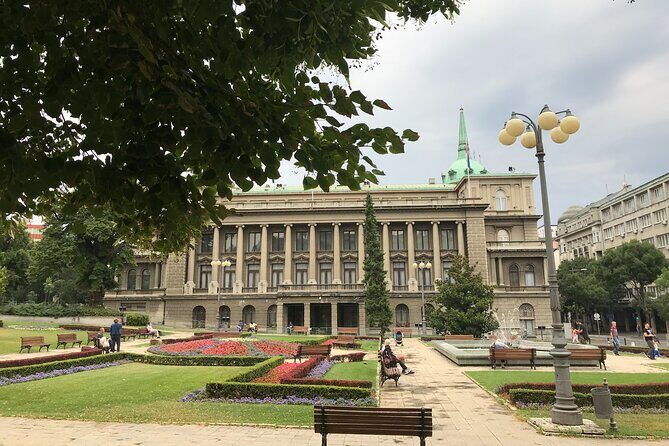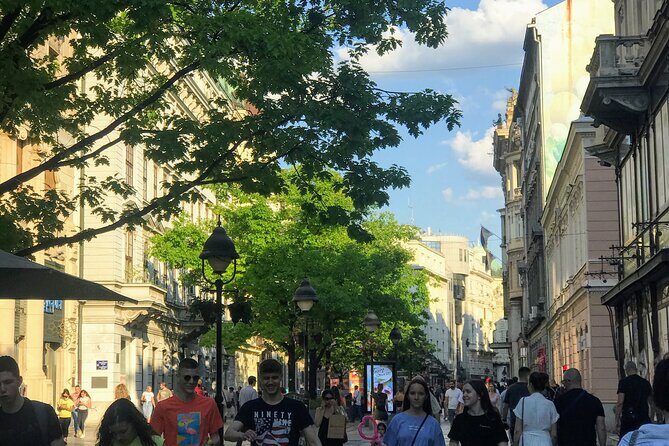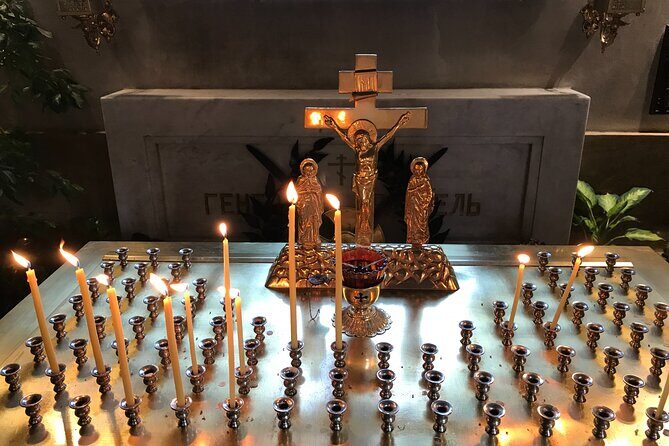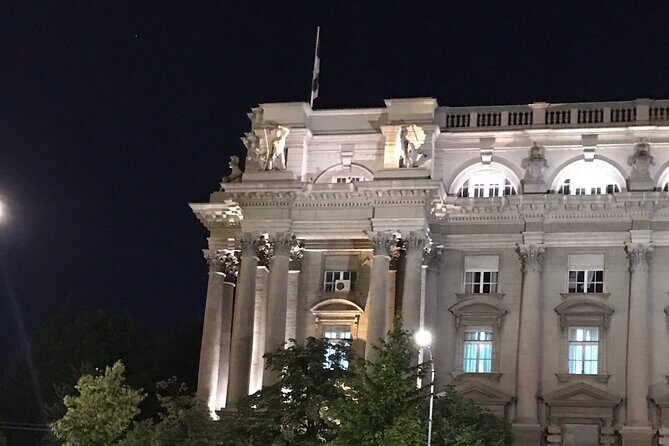Belgrade: The White Emigration in Serbia in the Wake of the Russian Revolution offers an intriguing glimpse into a lesser-known chapter of European history. For just over $170, you’ll spend roughly three hours walking through Belgrade’s streets, visiting key sites connected to the Russian White Army and its émigrés after the Bolshevik Revolution. Led by a knowledgeable guide, this tour balances history, architecture, and local culture, making it a compelling choice for history buffs and curious travelers alike.
Two things we particularly appreciate are the intimate access to historic sites—like the Holy Trinity Church where Baron Wrangel is buried—and the chance to understand how Russia’s upheaval left a lasting imprint on Belgrade’s architecture and society. The fact that it’s a private tour means you’ll get personalized attention, making complex topics like Nansen passports and the White Army both accessible and engaging.
A possible consideration is the tour’s focus on a specific historical episode, which might feel narrow for those looking for general city highlights. However, if you’re interested in how a pivotal moment in global history left a tangible mark on a Balkan city, this experience is a perfect fit. It’s best suited for history enthusiasts, students, or anyone wanting a deeper understanding of Serbia’s diverse cultural influences.
Key Points

- Authentic sites like the Holy Trinity Church and the Royal Palace help connect history with present-day Belgrade.
- Insightful commentary on the contribution of Russian architects and émigrés to Belgrade’s architecture and culture.
- Personalized experience with a knowledgeable guide who answers all your questions.
- Cultural treats like traditional cakes at Hotel Moskva and visits to historic theaters add flavor beyond history.
- Historical context provided about Serbia’s unexpected role in hosting Russian military exiles and their legacy.
- Accessible for most travelers with a moderate price point and manageable 3-hour duration.
In-Depth Review of the Tour Experience

Planning more time in Belgrade? We've covered other experiences worth considering.
Starting Point: Holy Trinity Church
We begin at the Holy Trinity Church, a striking Russian Orthodox church in Belgrade that immediately signals the tour’s focus on Russian culture and history. Here, you’ll see where Baron Wrangel, a key figure in the White Army, is buried. The church, with its distinctive architecture, is more than just a religious site; it’s a symbol of the Russian émigré community’s resilience and their deep roots in Belgrade. The visit is brief—about 30 minutes—but it’s packed with significance, setting the tone for the rest of the journey.
Exploring the Serbian Parliament and Architectures
Next, we stroll through a picturesque royal park to the House of the National Assembly of Serbia. This walk is an opportunity to spot Serbian buildings that bear the unmistakable “Russian footprint”—a term that hints at the influence of Russian architects. The guide points out structures like the General Staff building, the Post Office, and various ministries, explaining how Russian styles subtly shape Belgrade’s civic silhouette. The guide’s insights reveal the often-overlooked contribution of Russian design, adding a layer of appreciation for the city’s architecture.
Royal Palace and the Dynasty Connection
Passing by the Royal Palace, we encounter the monument to Nicholas II, the last Emperor of Russia. This stop is more than sightseeing; it’s a chance to reflect on the special relationship between Serbian and Russian royal families, which is a recurring theme throughout the tour. These links underline how Serbia’s support for Russia’s monarchy and vice versa created a bond that endured beyond the political upheavals.
A Taste of Russian-Influenced Hospitality: Hotel Moskva
The walk continues along a street once filled with craft workshops, now home to trendy designers. At Hotel Moskva, we enjoy a coffee break, sampling cakes like the “Moskva” and “Aurora”—recipes passed down over decades. The hotel’s luxurious interiors and the chance to observe Belgrade’s fashionable crowd make this a highlight for those interested in culture and style. It’s a clever way to blend history with everyday life, showing how Russia’s influence persists in Serbian hospitality and cuisine.
The National Theatre and Cultural Heritage
Our next stop is the National Theatre, where Russian ballerinas once performed. Here, we learn about the artistic contributions of Russian émigrés to Serbian cultural life. The guide shares stories of scenic designers, choreographers, and directors who found a new home in Belgrade, enriching the local arts scene. The theater’s history offers a window into how émigrés maintained their cultural identity while integrating into Serbian society.
The Serbian Academy of Science and the Fate of Emigrant Scientists
We visit the Serbian Academy of Science and Arts and the nearby university, exploring how Russian scientists and intellectuals adapted to life in exile. This segment underscores the broader impact of the émigré community—how they contributed to Serbia’s academic and scientific progress, even amid displacement and hardship.
Gavrilo Princip Square and Historical Reflection
Our final stop is Gavrilo Princip Square, a site infamous for its role in triggering WWI. The guide ties this history to the broader context of the Russian émigré experience, illustrating how global events ripple through local history. From here, we revisit places that Russian emigrants frequented, many of which still stand today, providing tangible links to their stories.
The Practicalities
This tour is thoughtfully designed to maximize what can be seen and learned in just a few hours. The price of $173.64 per person includes a guide who is well-versed in the subject, ensuring you get detailed, accurate information. Since it’s a private experience, you’ll enjoy a flexible pace and the opportunity to ask all your questions.
While the tour is walking, it’s mostly through city streets and parks—comfortable footwear is recommended. The stops are relatively brief, around 15 to 30 minutes each, but packed with information; it’s ideal for those who appreciate depth without spending a full day wandering.
Food and drink are not included, but the visit to Hotel Moskva offers a chance to enjoy traditional cakes—perfect for a snack or light refreshment. The tour ends back at the starting point, making logistics straightforward.
Authenticity and Value

People rave about the knowledge of the guide, Julja, who is praised for her depth of understanding and ability to answer any question. One reviewer called it “the best walking tour in Belgrade,” highlighting its engaging storytelling and unique focus. The value here isn’t just in the sites visited but in the rich context provided—making history feel alive and relevant.
This experience is especially valuable for travelers seeking a nuanced view of Belgrade’s history, beyond its typical city sights. It’s perfect for those interested in European, Russian, or Balkan history, as well as anyone curious about the legacy of exile communities and their lasting influence.
The Sum Up

For those who love uncovering hidden stories behind familiar places, this tour offers an authentic and engaging journey through Belgrade’s Russian émigré legacy. It’s suited for history lovers, cultural explorers, and anyone eager to understand how exile communities can shape a city’s identity over decades.
The combination of knowledgeable guides, thoughtfully chosen sites, and a manageable duration makes it a great value. You’ll leave with a deeper appreciation of Belgrade’s diverse layers and the resilience of its Russian community. Whether you’re a history buff or just a curious traveler, this experience promises insights that most city tours overlook.
FAQ
- Who is this tour suitable for?
It’s ideal for history enthusiasts, cultural travelers, and those interested in Serbia’s Russian connections. The private format makes it adaptable for most ages and interests. - How long does the tour last?
Approximately 3 hours, with walking between sites and brief stops at each location. - Is the tour accessible for all?
While mostly walking along city streets and parks, travelers should wear comfortable shoes. It’s suitable for most able-bodied individuals. - What is the price?
$173.64 per person, which includes the guide but not food, drinks, or additional entrance fees (though many sites are free). - Are tickets included?
Most sites are free to enter, such as the Holy Trinity Church and the Serbian Academy. - Can I cancel the tour?
Yes, with free cancellation up to 24 hours in advance. - What’s special about the guide?
Guests praise Julja for her thorough knowledge and engaging storytelling, making complex topics accessible. - What should I bring?
Comfortable walking shoes, a hat or umbrella for weather, and curiosity. - Is this tour suitable for children?
While not specifically tailored for children, it can be enjoyed by teens and older kids interested in history. - How do I meet the guide?
At the St. Mark Orthodox Church, Bulevar kralja Aleksandra 17, Belgrade.
This tour offers a genuinely enriching perspective on Belgrade’s history, connecting local sites with broader European events. For anyone wanting a mix of cultural insights, historical depth, and authentic sites, it’s a worthwhile journey into the city’s lesser-known past.
More Tour Reviews in Belgrade
More Belgrade experiences we've covered
- Belgrade Island Bike Tour
- Sightseeing Belgrade Walking Tour
- Eastern Serbia with a private driver
- Belgrade: Football History Tour
- Belgrade: Space architecture tour – brutalist architecture
- Belgrade: Golubac Fortress with Iron Gate Speed Boat Ride
- From Belgrade: Golubac Fortress & Iron Gate Danube Gorge
- Belgrade 101: A Walk Through the Citys History
- Tara National Park, Mokra Gora and Zlatibor
- From Belgrade: Private Nis and Devil’s Town Full-Day Tour
- NATO Bombing of Belgrade Private Tour
- Belgrade: Black Gold On a Plate Truffle Experience
